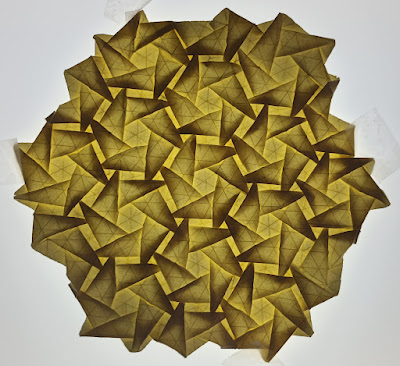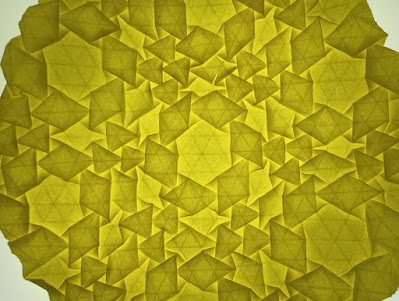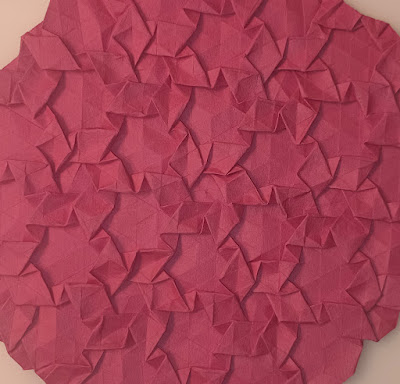Infinite Sprockets

This is a tessellation that I came up with after having done a very similar one. That first one ( Controlled Chaos Origami Tessellation ) had exceedingly small rectangles, which made it nearly impossible to execute cleanly on both sides. In this case, I made the rectangles bigger and it became infinitely more manageable. I'm pretty sure that I've seen this one before. I think that I've seen it done by Daniel Kwan as a crease pattern posted to his flickr account. I was not using that crease pattern while conceiving of this, though I did have some recollection of having seen it in the past. The front is all right triangles. The back side is small offset hex twists, the aforementioned rectangles and small triangle twists. Even with the larger rectangles, it's still a difficult to fold tessellation. The triangles and rectangles overlap each other. My crease pattern diagram is at the end of this post.














